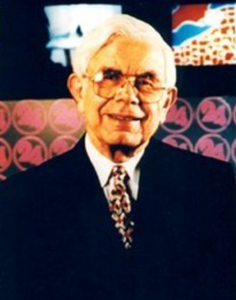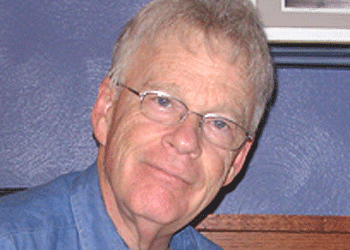From the NERW Archives
Yup, we’ve been doing this a long time now, and so we’re digging back into the vaults for a look at what NERW was covering one, five, ten, fifteen and twenty years ago this week, or thereabouts.
Note that the column appeared on an erratic schedule in its earliest years as “New England Radio Watch,” and didn’t go to a regular weekly schedule until 1997.
One Year Ago: July 3, 2017
*Do you believe in jinxed frequencies? No, we’re not talking about Boston’s 1510 (that’s later in the column), but rather about 106.1 in eastern PENNSYLVANIA, where iHeart made another format flip Thursday morning with almost no notice.
 In a market that’s crowded with adult contemporary flavors that include Jerry Lee Radio’s dominant WBEB (101.1 More FM), CBS Radio’s WTDY (Today’s 96.5) and WOGL (98.1) and Beasley’s WBEN-FM (95.7 BEN) and rimshot WJBR (99.5 Wilmington DE), iHeart’s WISX (106.1) had been something of an also-ran on the Philadelphia landscape in the 11 years since the plug was pulled on the old smooth jazz WJJZ. Remember “Philly’s 106.1”? “My 106.1”? In a market that’s crowded with adult contemporary flavors that include Jerry Lee Radio’s dominant WBEB (101.1 More FM), CBS Radio’s WTDY (Today’s 96.5) and WOGL (98.1) and Beasley’s WBEN-FM (95.7 BEN) and rimshot WJBR (99.5 Wilmington DE), iHeart’s WISX (106.1) had been something of an also-ran on the Philadelphia landscape in the 11 years since the plug was pulled on the old smooth jazz WJJZ. Remember “Philly’s 106.1”? “My 106.1”?
As “Mix 106.1,” WISX spent the last few years trying to stake out hot AC territory somewhere between the dominant WBEB and iHeart’s top-40 WIOQ (Q102), including a morning show featuring former Q102 personality Chio, followed by the syndicated Ryan Seacrest and Mario Lopez later in the day. On Thursday, Chio did his usual Mix morning show, then stayed on the air at 10 AM without the hot AC format or any station nickname, instead playing an hour of everything from Fleetwood Mac to Metallica while taking listener requests.
 At 11, the mini-stunt gave way to the new identity for 106.1: instead of playing in the crowded AC arena, iHeart is instead adding the new “Real 106.1” to an equally crowded urban landscape with a classic rhythmic/hip-hop format. Chio’s still the morning man there, but Seacrest is out, as is Lopez, with the rest of the day jockless for now. At 11, the mini-stunt gave way to the new identity for 106.1: instead of playing in the crowded AC arena, iHeart is instead adding the new “Real 106.1” to an equally crowded urban landscape with a classic rhythmic/hip-hop format. Chio’s still the morning man there, but Seacrest is out, as is Lopez, with the rest of the day jockless for now.
Within the iHeart cluster, “Real” now occupies a space between Q102’s mainstream CHR and urban “Power 99” WUSL (98.9), flanking R&B WDAS-FM (105.3) as part of a lineup that’s also aimed at Urban One’s cluster. Over there, of course, there was an earlier attempt at classic hip-hop in the form of “Boom 107.9” WPHI; that migrated to a more mainstream urban contemporary format when a format shuffle moved “Boom” and the WPHI calls to 103.9 last year. Urban One also competes against WDAS-FM with its “Old School” WRNB (100.3) – it’s all part of a crowded market in which “Real” becomes the fifth urban-targeted FM signal, and the sixth if you also count Urban One’s black gospel WPPZ (Praise 107.9).
*The surprising thing about the sign-off of WMEX (1510 Boston) Friday evening at 6 wasn’t so much that it happened, but that it took as long as it did.
 While the original WMEX was indeed a legendary part of the MASSACHUSETTS radio landscape for many decades, that heyday ended by the late 1970s – and it’s all been pretty much downhill at 1510 on the dial ever since. The deciding factor, as we’ve noted often in this space, was the decision in the early 1980s to move then-WITS from its longtime transmitter site in Quincy to a new 50,000-watt (but highly directional) facility on leased land in Waltham at the behest of Red Sox managers looking for the prestige of a “50 kilowatt” radio flagship. While the original WMEX was indeed a legendary part of the MASSACHUSETTS radio landscape for many decades, that heyday ended by the late 1970s – and it’s all been pretty much downhill at 1510 on the dial ever since. The deciding factor, as we’ve noted often in this space, was the decision in the early 1980s to move then-WITS from its longtime transmitter site in Quincy to a new 50,000-watt (but highly directional) facility on leased land in Waltham at the behest of Red Sox managers looking for the prestige of a “50 kilowatt” radio flagship.
Ever since, 1510’s long sequence of owners have been burdened with the cost of that site lease, recently reported to be $300,000 annually. How do you make a profit from an AM station at the top of the dial with operating costs that are that high? (And it’s not just the lease on the Waltham site, it’s the power bill for the aging transmitter, studio rent in Quincy, and everything else that goes along with trying to play in a major market.)
For owner after owner, the answer has turned out to be, “you can’t make a profit under those circumstances,” which may explain why there have been so many owners and operators – and why so many of them lately have come in with no prior radio operating experience. The latest, Daly XXL, bought the station in 2015 for just $175,000, and while they tried some interesting experiments that included a heavy reliance on weekend oldies, the tower lease renewal at the end of June was apparently still too much to overcome.
*The sale of WUMD (89.3 North Dartmouth) from UMass Dartmouth to RHODE ISLAND Public Radio took another big step forward last week as the students and community members who run WUMD signed their FM signal off the air. After 42 years of broadcasting (originally as WSMU on 91.1), the UMass studio is now webcast-only as wumd.rocks; 89.3, meanwhile, will return to the airwaves soon as a simulcast of RIPR’s WELH (88.1 Providence) while construction gets under way on the new Newport-licensed 89.3 signal that will broadcast a stronger Ocean State signal from the old WLNE (Channel 6) analog tower in Tiverton, R.I.
Five Years Ago: July 1, 2013
*What North American nation has the most consolidated mass media? There’s now a very good case to be made for CANADA, where regulators on Thursday approved Bell’s second attempt to swallow Astral Media, creating a media mammoth that includes the nation’s largest satellite TV provider, the nation’s largest English-language commercial TV network, one of the biggest radio groups in the nation, as well as a large roster of cable networks. (And, oh yeah, a phone company, too.)
 As you’ll recall, the CRTC turned down Bell’s first attempt at the C$3.4 billion deal last fall, citing concerns about too much concentration, especially where pay TV is concerned. The revised version of the deal requires Bell to spin off several additional cable networks to bring it down to about 22 percent of the French TV market (still a huge increase from Bell’s present status) and about 35 percent of the English TV market. As you’ll recall, the CRTC turned down Bell’s first attempt at the C$3.4 billion deal last fall, citing concerns about too much concentration, especially where pay TV is concerned. The revised version of the deal requires Bell to spin off several additional cable networks to bring it down to about 22 percent of the French TV market (still a huge increase from Bell’s present status) and about 35 percent of the English TV market.
On the broadcast side, little has changed in the second version of the deal: Bell will still spin off ten radio stations, including CHBM (97.3 Boom FM) and CFXJ (93.5 Flow FM) in Toronto and CJOT (99.7 Boom FM) and CKQB (106.9 the Bear) in Ottawa. But the merged entity will still bring together a solid Toronto cluster with Astral’s clusters in surrounding southern Ontario markets including Hamilton and St. Catharines, and it will bring Bell into the Maritime provinces in a bigger way.
Perhaps most significantly, the CRTC decided to allow Bell to keep CKGM (690 Montreal) alongside the three English-language stations (CJAD 800, CJFM 95.9 and CHOM 97.7) and two French-language stations (CKMF 94.3 and CITE 107.3) it’s acquiring from Astral. Canadian market caps would have limited Bell to only three stations in a market the size of the Montreal Anglophone market, but Bell persuaded the CRTC that owning a fourth station would allow it to keep CKGM’s specialty sports talk format alive. As a consequence, Bell must retain the current “TSN Radio 690” format on CKGM for the next seven years. (The only other independently owned English commercial station in Montreal for now is Cogeco’s CKBE 92.5, though it’s expected to be joined by a new talk station on 600 owned by the TTP group later this year.)
*A central NEW JERSEY FM station has once again changed frequencies. What’s now WPDI (103.9 Hazlet) started out as noncommercial class D WVRM at 89.3, eventually becoming WCNJ and then Indian “Dhoom FM” WDDM before being displaced from 89.3 by newcomer WFJS in Freehold. That’s when the station became WPDI and moved to 104.7, but that frequency conflicted with an Edison-based translator that also serves the South Asian community in the area. On Thursday, WPDI was granted a construction permit to slide down the dial to 103.9, still with 10 watts; interestingly, listeners in the area had already heard WPDI testing on that frequency several weeks earlier. (We’ve also heard reports of full-fledged commercials running on what should be a noncommercial facility.)
Ten Years Ago: June 30 & July 7, 2008
*The last time PENNSYLVANIA DJ Bruce Bond found himself in court, it was 2002. Bond, an institution at Cumulus’ WNNK (104.1 Harrisburg), had been cut loose from that station during a late-2001 format change, and when he returned to the airwaves the following spring on then-WRKZ (102.3 Carlisle), Bond was promptly sued by Cumulus for breaching his noncompete agreement.
 Bond’s new job on WRKZ ended in January 2004, and in the years since then he’d faded into obscurity – until last Thursday, anyway. That’s when Bond was indicted in New York City, charged with 65 counts of forgery, attempted grand larceny and identity theft. Bond’s new job on WRKZ ended in January 2004, and in the years since then he’d faded into obscurity – until last Thursday, anyway. That’s when Bond was indicted in New York City, charged with 65 counts of forgery, attempted grand larceny and identity theft.
Prosecutors say Bond was part of a scheme in which he sent bogus corporate checks to people who had responded to “work-at-home” ads on Craigslist. The scheme apparently started early in 2007, and involved conspirators in Nigeria and Europe who received most of the money after the fraud victims cashed the phony checks. (Once the checks had been cashed and the money sent abroad, the victims found out the checks were bad, leaving them on the hook to their banks.)
Those overseas accomplices allegedly paid Bond $1,500 a week for his role, which prosecutors say involved printing the checks in his Manhattan apartment and mailing them. When Bond was arrested in May, investigators said they found check paper and printers in the apartment.
Bond’s lawyers say he was just “a cog” in a much larger operation, but he’s in deep legal trouble nonetheless. At his arraignment on Friday, Bond pleaded not guilty and was ordered held on $250,000 bond. He’ll be back in court July 23.
In Shamokin, it’s the end of the line for WISL (1480): after several years of silence, the station’s license has finally been deleted from FCC records.
*In VERMONT, there’s some stunting going on at Northeast Broadcasting’s WUSX (93.7 Addison), which has dropped its “US 93-7” country format and is playing nothing but Phish songs for the moment. Whatever’s happening at WUSX, it will happen Tuesday at noon – and given that Northeast’s “Point” network, which blankets much of Vermont over WNCS (104.7 Montpelier) and its simulcast stations, has always been heavy on Phish…could 93.7 end up as the latest addition to the “Point” simulcasts?
 Tuesday is Canada Day, and it’s also the official launch day for Corus’ new “Greatest Hits” format on CINW (940 Montreal). We’re hearing that the new morning man on “AM 940” will be none other than Montreal radio veteran Marc “Mais Oui” Denis, who’s already in the Corus Montreal family as a weekender on CFQR (Q92.5). Tuesday is Canada Day, and it’s also the official launch day for Corus’ new “Greatest Hits” format on CINW (940 Montreal). We’re hearing that the new morning man on “AM 940” will be none other than Montreal radio veteran Marc “Mais Oui” Denis, who’s already in the Corus Montreal family as a weekender on CFQR (Q92.5).
There’s a new signal on the air on Cape Breton Island: CKCH (103.5 Sydney NS) signed on last week as “The Eagle,” playing country and competing with MBS Radio’s CJCB (1270 Sydney), the city’s last remaining commercial AM outlet.
Fifteen Years Ago: June 30, 2003
*It’s been quite a few years in the making, but NEW YORK‘s newest radio station finally made it to the air last week. WWHL (92.9 Southampton) signed on June 26, with a signal that blankets the East End of Long Island and is already getting good reports across Long Island Sound from the coasts of Connecticut and Rhode Island. The format should sound very familiar to many of those listeners: AAA Entertainment is simulcasting the AAA format of WEHM (96.7 East Hampton) on 92.9, and will soon move WEHM’s calls down there as well. 96.7, in turn, will soon switch to Bloomberg’s business news network under new calls.
*In New York City, the big buzz this week concerned the new hire at “Blink,” WNEW (102.7): Lizzie Grubman, the publicist-turned-hit-and-run-driver-slash-celebrity-of-the-second, will be providing gossip reports from the Hamptons beginning next weekend. Down on the AM dial, Rabbi Shmuley Boteach has followed former morning co-host Peter Noel out the door of WWRL (1600), ending what had been one of the more interesting (or at least unpredictable) morning shows in recent memory. And WLXE (1380) is dropping the regional Mexican programming that Mega had been running there; as Arthur Liu’s Multicultural takes over, so does the usual leased-time ethnic fare that Liu ran on 1380 (as WKDM) the last time he owned the station.
*In NEW JERSEY, the FCC gave Ed Seeger’s group the go-ahead to move WSNJ-FM (107.7 Bridgeton) into the Philadelphia market under the guise of providing “first local service” to Pennsauken. WSNJ’s allocations move, which will transform its class B signal on 107.7 into a class A on 107.9, spells trouble for two high school stations. WWPH (107.9 Princeton Junction NJ) and WHHS (107.9 Havertown PA) aren’t expected to be able to find new spots on the dial, and as unprotected class D stations, that means they’ll likely have to go dark once WSNJ moves. In WHHS’ case, that means the end of fifty years of student broadcasting, something the FCC noted in its rulemaking reallocating the Bridgeton facility – but rules are rules and WSNJ takes priority in the Commission’s eyes. Ever wonder how much one one of these move-ins is worth? Consider this: Seeger and his group paid Ed Bold and his family $20 million for WSNJ AM/FM, and we’ve heard from a couple of sources in Philly is that the asking price for the FM once it’s moved will be in the $50 million range.
*In VERMONT, the FCC paid a call on Tuesday to “Radio Free Brattleboro,” the unlicensed community station that had been operating very openly in town for nearly five years, initially on 88.1 and more recently on 88.9 (to avoid interfering with the new 88.1 Norwich signal that Vermont Public Radio will soon be signing on) with a few watts that covered the town quite well. One of the station’s DJs gave the Brattleboro Reformer a video of the visit, in which an FCC field agent ordered the jock on duty to turn off the mixing board and transmitter and threatened penalties if broadcasts were resumed. The shutdown was apparently prompted by two interference complaints, one from WFCR (88.5 Amherst MA) and the other from a local resident; it doesn’t appear that any of the station’s equipment was seized, though the station’s website has been down ever since.
*RHODE ISLAND now has DTV on the air, becoming the very last of the 50 states to get an operating digital outlet when WPRI-DT (Channel 13) came on the air last week, with WNAC-DT (Channel 54) soon to follow. (A technicality here: WPRI’s transmitter is in Rehoboth, Mass., so a nitpicker could argue that there’s still no DTV in Rhode Island itself – but then, neither of the operating DTVs licensed to Delaware operate from within its state limits, either.)
Twenty Years Ago: June 30, 1998
*Rumors are flying at Boston’s WBZ-TV (Channel 4), after a visit last week from Joel Cheatwood, the news impresario who turned things around at WHDH-TV (Channel 7) a few years back before leaving for a controversial tenure at WMAQ-TV (Channel 5) in Chicago. ‘BZ honcho Ed Goldman tells the newspapers that he was just picking Cheatwood’s brain while Cheatwood was in town taking his son to an orthodontist appointment…but nobody’s failed to notice that Cheatwood is currently an NBC consultant, while WBZ is a CBS O&O. Could Cheatwood be returning to Boston to try to boost ‘BZ’s plummeting ratings? We’ll see…
*We mourn the passing of John Burgomaster, better known as John Masters, the voice of WRKO news for 28 years until his retirement in 1994. Masters’ booming voice defined RKO’s “20/20 News” during its top-40 years, and he remained with the station for most of its years in the talk format as well. Burgomaster succumbed to cancer last week.
*NEW HAMPSHIRE is about to get a new nightly newscast. Derry’s WNDS (Channel 50) has hired longtime WMUR news director Jack Heath to put together a nightly half hour to debut in September. WNDS is one of several New Hampshire stations that used to have a daily newscast, along with WNHT (now WNBU, Channel 21) in Concord and WGOT (now WPXB, Channel 60) in Merrimack.
*Congratulations to Lisa Garvey, who’s leaving Manchester rocker WGIR-FM (101.1) for a big move up in market size — all the way to number one, with a night shift at WNEW-FM (102.7) in New York. NERW hears longtime ‘GIR personality Fil Robert Kaye has left the airwaves as well, to become a salesman for the Capstar station.
*In MAINE, it seems NERW missed a call-letter change by just days. We visited the area on Friday the 19th — and on Monday the 22nd, Scarborough-based WPKM (106.3) finally became WBQW, simulcasting classical WBQQ (99.3) from Kennebunk as “W-Bach.” Oh well, now we have an excuse to go back…
*A call letter change in upstate NEW YORK became official while we were away; Rochester’s AM 950 is now WEZO, and 98.9 FM has changed from WKLX to pick up the WBBF calls from the AM side. The WBBF calls had been on the AM side since 1953; AM 950 is now the fourth area home for the WEZO calls, whose heritage use was on 101.3 FM (now WRMM) from 1971 until 1987. The calls also appeared on AM 990, now WDCZ, for a few years in the late eighties, and then on Avon’s 93.3 FM, now WQRV, for a few years after that.
*Another PBS station is going commercial. Schenectady’s WMHQ (Channel 45) is being sold to Sinclair Broadcasting, which will turn it into either a UPN or WB affiliate. WMHQ was the second service for public TV WMHT (Channel 17), which says it needs the money for digital TV development. Albany-area viewers with long memories will recall that channel 45 began as a commercial independent, WUSV-TV, before being bought by WMHT and operated first as WMHX-TV and then as WMHQ. Meantime, Buffalo’s WNED is awaiting word on whether the FCC will let it sell noncomm-licensed WNEQ (Channel 23), or whether it will end up keeping WNEQ and selling what’s now its primary outlet, commercial-licensed WNED-TV (Channel 17). WNED says it has “at least six” interested buyers for whichever station is put up for sale.
*In the Buffalo area, the powerful tourist information station in Niagara Falls, Ontario is relocating. CFLZ had been on 91.9 but will be displaced by the new 92.1 allocation in Amherst and by the pending move of CHOW Welland from 1470 to 91.7. Its new home? 105.1 MHz. |










 Bond’s new job on WRKZ ended in January 2004, and in the years since then he’d faded into obscurity – until last Thursday, anyway. That’s when Bond was indicted in New York City, charged with 65 counts of forgery, attempted grand larceny and identity theft.
Bond’s new job on WRKZ ended in January 2004, and in the years since then he’d faded into obscurity – until last Thursday, anyway. That’s when Bond was indicted in New York City, charged with 65 counts of forgery, attempted grand larceny and identity theft. Tuesday is Canada Day, and it’s also the official launch day for Corus’ new “Greatest Hits” format on CINW (940 Montreal). We’re hearing that the new morning man on “AM 940” will be none other than Montreal radio veteran Marc “Mais Oui” Denis, who’s already in the Corus Montreal family as a weekender on CFQR (Q92.5).
Tuesday is Canada Day, and it’s also the official launch day for Corus’ new “Greatest Hits” format on CINW (940 Montreal). We’re hearing that the new morning man on “AM 940” will be none other than Montreal radio veteran Marc “Mais Oui” Denis, who’s already in the Corus Montreal family as a weekender on CFQR (Q92.5).



